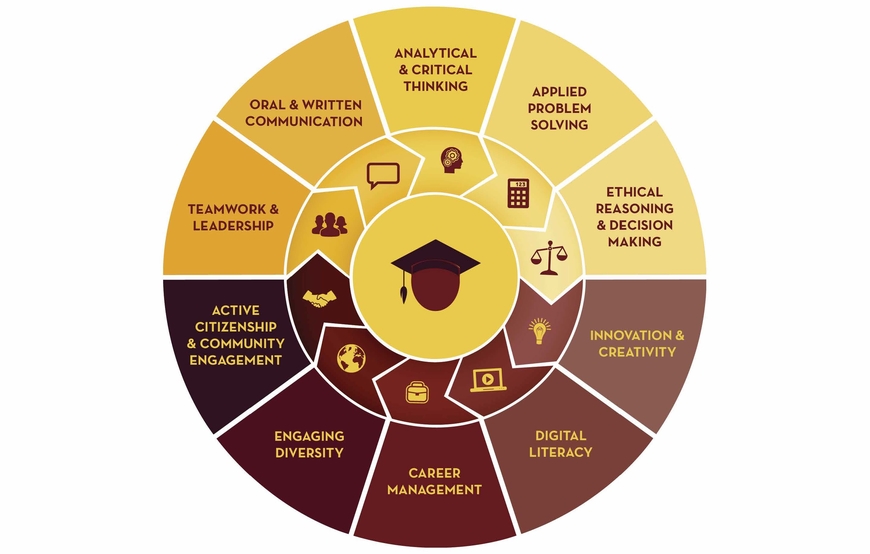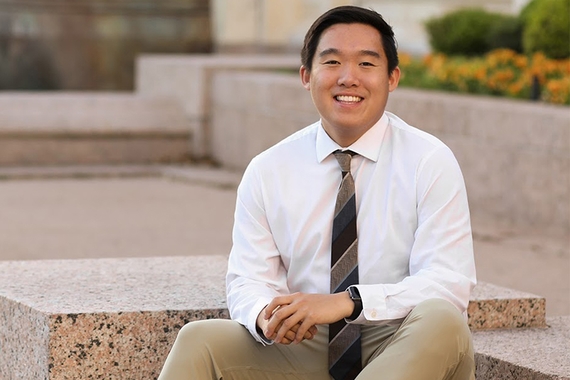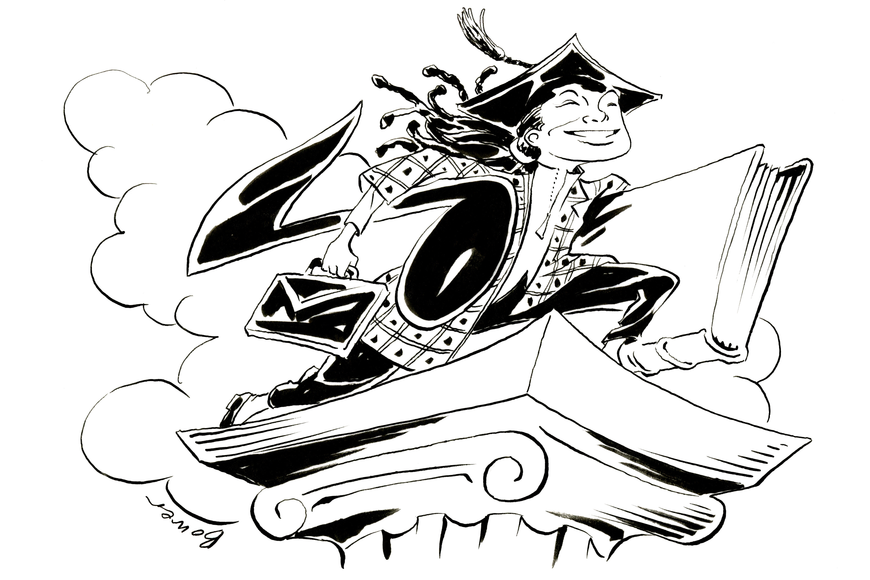Classroom to Career
When CLA launched its Career Readiness Initiative in 2015, it emphasized something that was there all along—in the classrooms, in the coursework, in the track record of its graduates. “We call it the liberal arts advantage,” says Ascan Koerner, CLA’s associate dean for undergraduate education. “We wanted to make a very explicit claim about the value of a liberal arts education.”
The claim is backed up by data showing that, as their careers progress, liberal arts graduates eventually earn more on average than STEM graduates (science, technology, engineering, math). “Technical skills get you through the door,” says Koerner, “but they don’t advance your career.” Indeed, liberal arts majors are more likely to become the people in charge.

The Career Readiness Initiative was designed to ensure CLA graduates are endowed with this advantage. At its heart is a set of core competencies, essential both to professional success and a liberal arts education: analytical and critical thinking, applied problem solving, ethical reasoning and decision making, innovation and creativity, oral and written communication, teamwork and leadership, engaging diversity, active citizenship and community engagement, digital literacy, and career management.
If these competencies have long been inherent to CLA courses, their connection to life after graduation has not always been explicit, says Koerner. As a result, students sometimes struggled to explain the value of their own education.
Now, CLA professors are asked to be more intentional about connecting the dots. Since 2017, more than a hundred instructors have taken part in the Career Readiness Teaching Fellows program, where they create coursework—sometimes entirely new courses—around one or more competencies.
Students, for their part, connect the dots using the RATE process, which stands for reflect, articulate, translate, and evaluate. It helps them understand not just what they’ve learned but how it’s useful, well beyond the classroom. To date, some 43,000 RATE assignments have been completed.
“It provides a language for talking about what they’re doing,” says Wendy Rahn, a professor of political science. Maggie Bergeron, who teaches dance, calls it “naming the unnameable, trying to find some sort of concreteness to the ineffable quality of a liberal arts education.… And I think that’s really important, because the world is not quantifiable or concrete.”
The initiative has also revamped internships, research positions, and other extracurricular work. An internship coordinator was hired, requirements have been standardized and aligned with core competencies, and the RATE process is now part of every internship.
Scholarships to support these experiences are “absolutely essential,” Koerner says, as many internships are unpaid, research costs money, and students of modest means would otherwise need to work to make college work for them. “Those are the students whose lives we’re changing,” Koerner says. “This makes a real difference in the trajectory of their life.”
Here, three recent grads explain how CLA’s career readiness efforts—and the scholarships that support them—have paid off in their post-college lives.

Because of internships, research positions, and other work opportunities supported by CLA scholarships, Christine Cao (BA ’15, psychology), was able to "test the waters" and take a career path that led to her role as a data scientist with Everlane.

Jonathan Du (BA ’17, political science) credits CLA with helping him develop as a problem solver. A scholarship provided "a monumental impact," and helped him get to where he is today...a content designer at Facebook.

"My scholarships gave me room to be able to choose career experiences where the focus could be more on building career skills than having to fully support myself," says Lauren Foley (BA ’21, English and Spanish), now part of the editorial team at Lerner Publishing.
